The Intriguing Connection Between Comets and Stardust delves into the captivating relationship between these celestial objects. Comets, known for their mesmerizing tails and unpredictable orbits, have long fascinated scientists and stargazers alike. But what exactly are they made of? Enter stardust, the enigmatic remnants of dying stars spread throughout the cosmos. This article uncovers the mysterious origins and composition of comets and stardust, explores the intricate connection between the two, discusses scientific studies and findings, and contemplates the future implications and impact of this cosmic relationship. Prepare to embark on a cosmic journey that sparks wonder and unveils the hidden secrets of the universe.
Contents
- What Are Comets?
- The Enigma of Stardust
- The Cosmic Connection
- Scientific Studies and Findings
- Implications and Impact
- Future Exploration and Research
- Conclusion
-
Frequently Asked Questions
- What makes comets different from other celestial objects?
- How are comets formed?
- Can comets pose a threat to Earth?
- How do scientists study comets?
- Do comets contain stardust?
- How are comets related to stardust?
- What role do comets play in the formation of our solar system?
- Can comets be used to study the origins of life?
- Are there missions planned to study comets in the future?
- What can we learn from studying comets?
- References
-
Frequently Asked Questions
- 1. Can comets bring life to Earth?
- 2. How are comets formed?
- 3. What is the difference between a comet and an asteroid?
- 4. How do scientists study the composition of comets?
- 5. What is stardust made of?
- 6. How are comets and stardust connected?
- 7. What happens when a comet interacts with stardust?
- 8. What are some recent breakthroughs in the study of comets and stardust?
- 9. What are the potential discoveries from future comet missions and stardust research?
- 10. What is the significance of the connection between comets and stardust?
- References
- Read More
What Are Comets?
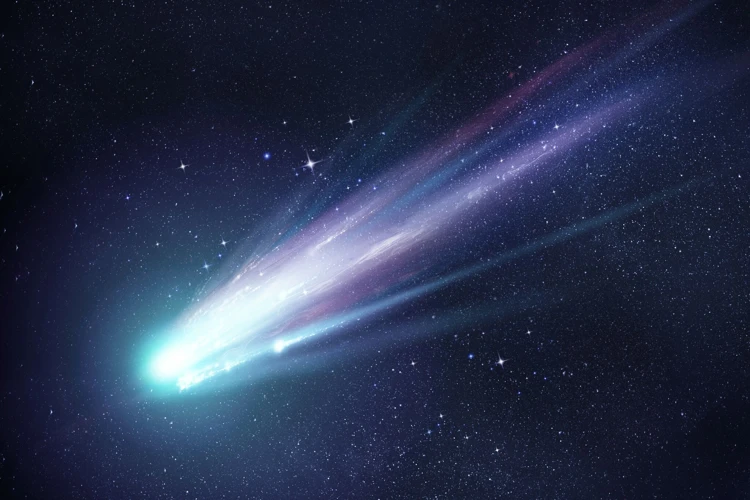
Comets are fascinating celestial objects that captivate our imaginations with their ethereal beauty and mysterious nature. These cosmic wanderers are composed of a combination of ice, dust, rocky particles, and organic compounds, creating a unique composition often referred to as a “dirty snowball.” Comets originate from the outer regions of our solar system, in a region called the Oort Cloud, a vast repository of icy bodies. When a comet gets close enough to the Sun, the heat causes the icy nucleus to vaporize and release gas and dust, forming the iconic coma, or atmosphere, around the nucleus. This coma further extends into an elongated tail, which can stretch for millions of kilometers across the sky. Comets have elliptical orbits, which means they can travel immense distances, visiting the inner regions of the solar system before returning to the frigid depths of the Oort Cloud. The study of comets has provided invaluable insights into the early formation and evolution of the solar system, and their appearances throughout history have sparked intrigue and wonder in cultures around the world. The enigmatic nature of comets continues to inspire scientific exploration and discovery, unraveling the mysteries of our cosmic neighborhood.
Definition and Composition
Comets are astronomical objects defined as icy bodies that orbit the Sun in elongated orbits. They are composed of various elements and compounds, which give them their unique chemical composition. The nucleus of a comet is primarily made up of frozen water, also known as ice. Additionally, the nucleus contains other volatile substances such as carbon dioxide, methane, and ammonia. These volatile compounds play a crucial role in the comet’s behavior as they vaporize when the comet approaches the Sun, creating the glowing coma and tail that are visible from Earth. Along with the ices, comets also contain solid particles of dust and rocky material, including silicates and organic compounds. These components contribute to the dark coloration of comets and also provide insights into the early stages of the solar system’s formation. By studying the composition of comets, scientists can gain valuable information about the building blocks of planets and the molecular building blocks of life itself. The unique composition of comets sets them apart from other celestial objects and makes them a subject of great interest for researchers and astronomers alike.
Characteristics and Behavior
Comets exhibit a range of fascinating characteristics and behaviors that distinguish them from other celestial objects. One of the most distinctive features of comets is their highly elliptical orbits, which can take them from the outer regions of the solar system to the innermost parts near the Sun. This elliptical path gives rise to their sporadic appearances, making them unpredictable and often drawing awe and curiosity. As comets approach the Sun, their icy nuclei heat up, causing the release of gas and dust particles, creating a coma and tails that can stretch for vast distances. These tails can point away from the Sun due to the solar wind, giving comets their iconic appearance. The size and brightness of comets can vary greatly, with some observable to the naked eye while others require a telescope for viewing. Additionally, comets can have periodic or non-periodic orbits, meaning they may return to the inner solar system at regular intervals or appear only once in recorded history. The study of cometary behavior provides valuable insights into the dynamics and evolution of our solar system, shedding light on the origins of water and organic molecules as well as the potential influences of comets on Earth’s history.
The Enigma of Stardust
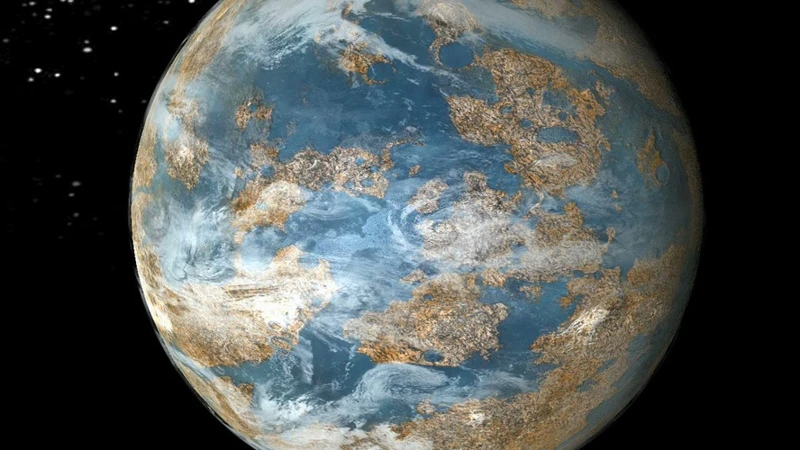
Stardust, the enigmatic substance scattered throughout the cosmos, holds the remnants of dying stars and the secrets of the universe within its microscopic particles. This interstellar material is made up of various elements, including carbon, oxygen, nitrogen, and traces of heavier elements that were forged in the hearts of stars. When stars reach the end of their life cycles, they release this stardust into space through explosive events like supernovae. These particles can then become part of interstellar clouds and planetary systems, including our own. Scientists have been able to study stardust by collecting samples from comets, meteorites, and interstellar space itself. These samples have provided valuable clues about the origins of our solar system, the formation of planets, and the processes that led to the creation of life on Earth. The study of stardust has not only deepened our understanding of the universe but has also sparked philosophical and existential questions about our place in the cosmos. The significance of stardust extends beyond scientific curiosity, connecting us to the ancient origins of the elements that make up our very being.
Origins and Composition
The origins and composition of comets are shrouded in intrigue and continue to be the subject of scientific investigation. Comets are believed to have originated from the icy remnants of the early solar system, dating back billions of years. These icy bodies, containing various volatile substances such as water, methane, ammonia, and carbon dioxide, formed in the outer regions of the protoplanetary disk. As the solar system evolved, some of these icy bodies congregated in the distant regions, forming what is now known as the Oort Cloud. The composition of comets provides a treasure trove of information about the conditions and materials present during the formation of the solar system. Apart from the volatile gases, comets also contain solid components such as dust, rocks, and organic compounds. This mix of volatile and solid materials can reveal insights into the building blocks of planets and the potential for the emergence of life. Studying the composition of comets entails analyzing the gases and dust particles emitted during their close encounters with the Sun or through space missions that have collected samples, such as the Stardust mission. By understanding the origins and composition of comets, scientists can piece together the puzzle of our solar system’s history and gain valuable insights into the processes that shaped our cosmic neighborhood.
Discovery and Significance
The discovery of comets and their significance in our understanding of the universe has played a crucial role in shaping our knowledge of celestial objects. Throughout history, comets have been observed and recorded by cultures across the globe. One of the most famous recorded comets is Halley’s Comet, which has been observed for thousands of years and inspired awe and curiosity. The significance of comets lies in their role as time capsules, preserving ancient materials and providing insights into the early stages of our solar system’s formation. By studying the composition of comets, scientists have been able to identify and analyze stardust, which holds clues about the origins of our universe. Comets have also been instrumental in understanding the role of water on Earth, as they are believed to have contributed to the planet’s water supply. The appearance of comets throughout history has often been associated with significant events in human history, leading to various interpretations and significance in different cultures and belief systems. Comets continue to be a subject of fascination and scientific exploration, unraveling the mysteries of our cosmic origins and providing a deeper understanding of our place in the universe.
The Cosmic Connection
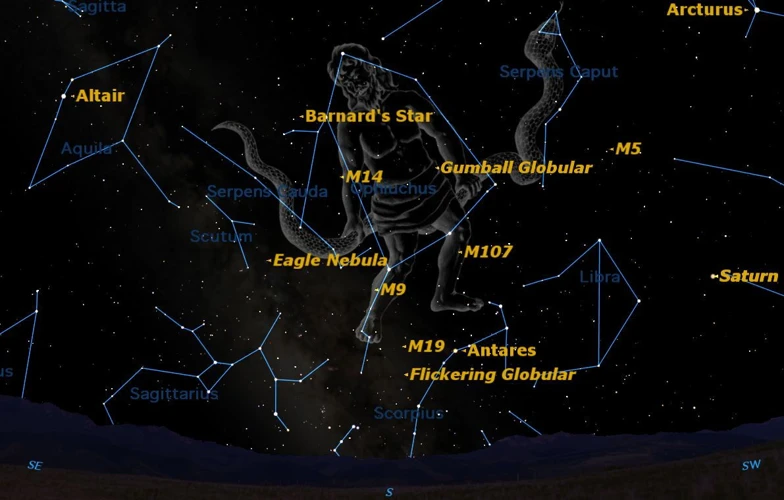
The cosmic connection between comets and stardust is a fascinating phenomenon that links these two celestial entities in an intricate dance across the vastness of space. Comets, with their icy compositions, often contain a significant amount of stardust within their nucleus. Stardust refers to tiny particles formed from the remnants of stars, which have been dispersed throughout the universe over billions of years. These particles include elements such as carbon, nitrogen, oxygen, and other complex molecules. When a comet approaches the Sun, the heat causes the icy nucleus to vaporize, releasing not only gases but also trapped stardust particles. As the comet travels through the solar system, some of these particles are left behind, creating a trail of stardust in its wake. This celestial dance between comets and stardust highlights the interconnectedness of cosmic processes, as the remnants of ancient stars become incorporated into the fabric of comets and are then scattered throughout the solar system. This cosmic connection sheds light on the origins and evolution of both comets and stardust, providing valuable insights into the complex tapestry of the universe.
Relation Between Comets and Stardust
The relationship between comets and stardust is a captivating and intricate one, deepening our understanding of the origins and composition of these cosmic entities. Comets, with their icy nuclei, hold within them a treasure trove of stardust—a collection of microscopic particles that originated from dying stars. These particles, composed of minerals, rocks, and organic compounds, are ejected into space during a star’s explosive death, forming the building blocks of comets and other celestial bodies. As comets travel through the solar system, they interact with various sources of stardust, such as interstellar dust and remnants from dying stars. This interaction leads to the incorporation of stardust into the cometary nucleus, enriching its composition with the remnants of ancient stars. Additionally, when comets approach the Sun and heat up, they release stardust particles into space, allowing scientists to study and analyze the composition of these ancient cosmic remnants. The connection between comets and stardust provides a fascinating glimpse into the interconnectedness of celestial bodies and the vast cosmic cycles that shape our universe.
Interactions and Exchange
The interactions and exchange between comets and stardust play a crucial role in the cosmic ecosystem. When a comet approaches the Sun, the intense heat causes the icy nucleus to vaporize, releasing gas and dust into space. This process creates the coma, or atmosphere, around the comet, as well as the stunning tail that can stretch for millions of kilometers. As the comet moves along its orbit, it encounters various celestial bodies, including asteroids, planets, and even other comets. These interactions can alter the trajectory and behavior of the comet, leading to changes in its composition and structure. Additionally, comets can experience collisions with other objects, which can cause the exchange of material between them. This exchange is significant because it allows for the mixing of different compositions and introduces new elements and compounds into the cometary nucleus. The dust particles emitted by comets can travel through space and potentially reach other celestial bodies, such as planets or moons, where they can have a profound impact on their surfaces and atmospheres. The intricate interplay between comets and stardust showcases the interconnectedness of celestial objects and highlights the dynamic and ever-evolving nature of the universe.
Scientific Studies and Findings
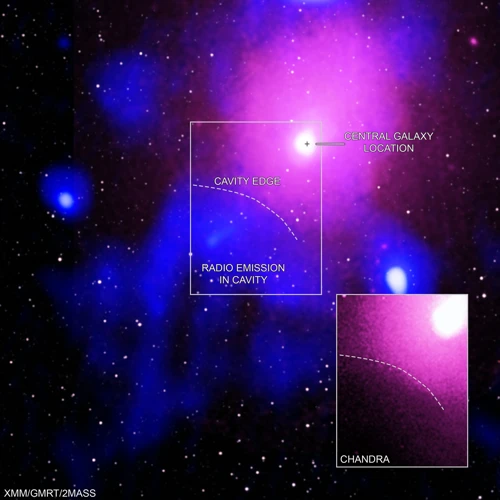
Scientific studies and findings have played a crucial role in unraveling the mysteries of comets and stardust, providing us with invaluable insights into the nature of these celestial phenomena. Over the years, numerous missions have been undertaken to explore comets up close and gather data that helps scientists better understand their composition, behavior, and origins. One notable mission is the European Space Agency’s Rosetta mission, which successfully rendezvoused with Comet 67P/Churyumov-Gerasimenko in 2014. The spacecraft orbited the comet for over two years, analyzing its nucleus, coma, and tail, and even deploying a lander named Philae to the surface. The mission provided unprecedented data on the composition of the comet, revealing the presence of complex organic molecules and isotopic variations in its ice. Another significant mission was NASA’s Stardust mission, which collected samples of dust particles from the coma of Comet Wild 2 in 2004. The returned samples provided scientists with invaluable material to study in laboratories on Earth, leading to groundbreaking discoveries about the composition and structure of comets. Additionally, laboratory studies and analysis of stardust samples have revealed the presence of presolar grains—microscopic particles that formed in other star systems before our solar system’s birth. These findings have opened up new avenues of research and shed light on the cosmic origins of our own solar system. The connection between comets and stardust continues to be explored through various missions and ongoing research, further deepening our understanding of the complex and interconnected nature of the universe we inhabit.
Comet Missions and Samples
Comet missions have played a crucial role in advancing our understanding of these enigmatic celestial bodies. Over the years, several spacecraft have been launched to study comets up close and even collect samples to bring back to Earth. One notable mission was the European Space Agency’s Rosetta mission, which embarked on a ten-year journey to rendezvous with comet 67P/Churyumov-Gerasimenko. Rosetta successfully deployed the Philae lander, which made a historic touchdown on the comet’s surface, providing valuable data and images. Another successful mission was NASA’s Stardust mission, which collected samples from the coma of comet Wild 2 and returned them to Earth in 2006. These samples have provided scientists with precious insights into the composition and structure of comets. The upcoming Comet Interceptor mission, scheduled to launch in the 2020s, aims to study a pristine comet from the Oort Cloud. By analyzing comet samples, scientists can unravel the mysteries of their formation, evolution, and even shed light on the origins of life on Earth. These missions serve as testaments to our curiosity and drive to explore the unknown depths of the cosmos. They pave the way for future comet missions and the potential for groundbreaking discoveries.
Laboratory Analysis of Stardust
Laboratory analysis of stardust plays a crucial role in unraveling the mysteries of these cosmic remnants. Scientists have developed sophisticated techniques to study and analyze stardust samples collected from various sources, including comets, meteorites, and interstellar space. The analysis begins with the careful extraction and isolation of stardust grains from the collected samples. These grains are incredibly tiny, often measuring only a few micrometers in size. Advanced instruments such as scanning electron microscopes and mass spectrometers are then employed to examine the physical and chemical properties of the stardust. By bombarding the grains with various particles and analyzing the resulting emissions, scientists can determine the elemental composition and isotopic ratios of the stardust. This provides valuable insights into the processes that occurred during the birth and evolution of stars. Laboratory analysis of stardust has revealed the presence of elements like carbon, oxygen, nitrogen, and even traces of rare isotopes, which were formed in the hearts of ancient stars and scattered across the universe through stellar explosions. This analysis is crucial for understanding the origins of life on Earth and piecing together the complex puzzle of our cosmic ancestry. Astrological interpretations of stardust have also intrigued researchers, leading to further exploration of the connections between celestial phenomena and human behavior.
Recent Breakthroughs and Revelations
Recent years have seen remarkable breakthroughs and revelations in our understanding of comets and their connection to stardust. One notable breakthrough came in 2014 when the European Space Agency’s Rosetta spacecraft successfully landed its Philae probe on the surface of comet 67P/Churyumov-Gerasimenko. This unprecedented feat provided scientists with an up-close and personal view of the comet’s composition and structure. The data collected revealed that comets contain complex organic molecules, including amino acids, which are the building blocks of life as we know it. This discovery opened up new possibilities for studying the origins of life on Earth and the potential for life elsewhere in the universe. Another exciting development was the Stardust mission carried out by NASA. In 2006, the Stardust spacecraft returned to Earth with samples of cometary dust from comet Wild 2. Analysis of these samples yielded surprising findings, including the presence of crystalline minerals, which pointed to the possibility that comets played a role in delivering essential ingredients for life to our planet. These recent breakthroughs and revelations have reshaped our understanding of comets and their role in the cosmic tapestry. The continued exploration and study of comets hold the promise of uncovering even more intriguing insights into the origins and diversity of the universe we inhabit.
Implications and Impact
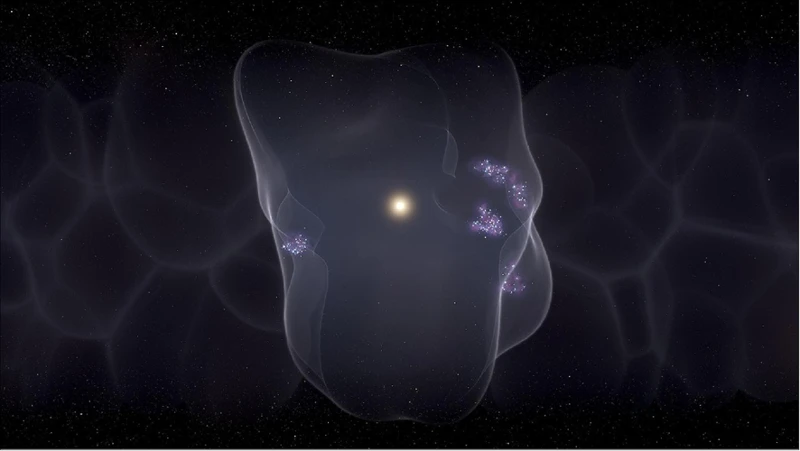
The implications and impact of the connection between comets and stardust are far-reaching and profound. By studying comets and analyzing the stardust they contain, scientists gain valuable insights into the early stages of our solar system’s formation. The composition of stardust provides clues about the elemental building blocks present in the universe billions of years ago. This knowledge helps astronomers refine their understanding of how planets, including Earth, came into existence and how the chemical processes necessary for life may have developed. The study of comets and stardust contributes to our understanding of the broader universe and its evolution. Comets, with their pristine material, can shed light on the conditions and processes that occurred in the outer regions of the early solar system. Through the analysis of stardust, scientists have discovered the presence of complex organic molecules, including amino acids, which are the building blocks of life as we know it. This finding has significant implications for the possibility of life existing elsewhere in the universe. The connection between comets and stardust also highlights the interconnectedness of celestial phenomena and the profound influence they have on shaping our cosmic environment. As our understanding deepens, the implications and impact of studying comets and stardust continue to expand, leading to breakthroughs in multiple scientific disciplines, including astronomy, astrochemistry, and astrobiology. This knowledge not only enriches our understanding of the universe but also fuels our curiosity and sense of wonder about the cosmos we inhabit.
Future Exploration and Research
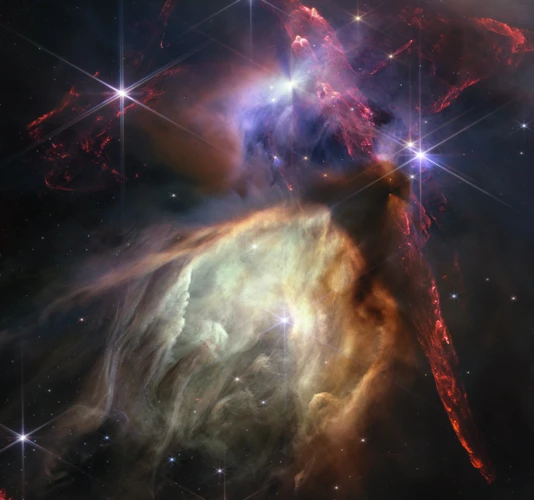
Future exploration and research in the field of comets and stardust promise to unveil even more fascinating discoveries about these celestial phenomena. Scientists and space agencies are continually planning and executing missions to study comets up close and collect valuable data. One such mission is the European Space Agency’s Comet Interceptor, which is scheduled to launch in the early 2030s. This groundbreaking mission aims to rendezvous with a comet that is making its first journey into our inner solar system from the Oort Cloud. By studying a pristine and untouched comet, scientists hope to gain insight into the composition, structure, and evolution of comets, shedding light on the origins of our solar system. Additionally, the Japan Aerospace Exploration Agency’s Hayabusa2 mission and NASA’s OSIRIS-REx mission are focused on studying asteroids, which are considered to be remnants similar to comets. These missions involve sample return, bringing back valuable stardust from deep space for laboratory analysis. By examining these precious samples, scientists can refine their understanding of the composition and history of comets and stardust, unlocking secrets of the universe that have remained elusive until now. Exciting future missions and research initiatives hold the potential to revolutionize our understanding of comets, stardust, and the cosmic connections that shape our existence in the vastness of space.
Upcoming Missions and Projects
- Dragonfly Mission: NASA’s Dragonfly mission, set to launch in 2026, aims to explore the enigmatic moon Titan, which is known for its similarities to early Earth. Dragonfly will be a rotorcraft lander designed to study Titan’s surface and atmosphere, investigating its organic chemistry and the potential for habitability. This mission hopes to provide valuable insights into the conditions that led to the emergence of life on Earth.
- Comet Interceptor: The European Space Agency’s Comet Interceptor mission is expected to launch in the early 2030s. This innovative mission will consist of three spacecraft that will rendezvous with a pristine comet or interstellar object entering our solar system for the first time. By studying these celestial visitors, scientists hope to gain a deeper understanding of the building blocks of comets and their role in the formation and evolution of the solar system.
- Europa Clipper: Set for a launch in the mid-2020s, NASA’s Europa Clipper mission will explore Jupiter’s icy moon Europa, which is believed to have a subsurface ocean. The mission will conduct detailed reconnaissance flybys of Europa, capturing high-resolution images and collecting valuable data on the moon’s geology, ice shell, and potential habitability. This mission has the potential to uncover the presence of stardust and cometary material on Europa’s surface.
- LISA Mission: The LISA (Laser Interferometer Space Antenna) mission, a collaboration between ESA and NASA, is set to launch in the early 2030s. LISA aims to detect and study gravitational waves, ripples in the fabric of spacetime caused by celestial phenomena such as colliding black holes and neutron stars. By observing these gravitational waves, scientists can gain insights into the formation of our universe, including the role comets and stardust play in cosmic events.
These upcoming missions and projects hold great promise for expanding our knowledge of comets, stardust, and the cosmic connections that shape our universe. Through cutting-edge technology and scientific exploration, these missions will push the boundaries of our understanding and pave the way for future discoveries and insights.
Potential Discoveries and Insights
The study of comets and stardust holds immense potential for future discoveries and insights that could revolutionize our understanding of the universe. As scientists continue to explore these cosmic entities, they hope to unravel the mysteries surrounding the origins of life on Earth. Comets, with their icy composition, have long been considered carriers of organic molecules and possibly the building blocks of life. By analyzing the composition of comets and stardust, researchers aim to understand the complex processes that led to the formation of our solar system and the emergence of life-sustaining conditions. The analysis of stardust samples collected from missions like Stardust and Rosetta has already provided invaluable information about the age, structure, and composition of these interstellar particles. These findings pave the way for deeper insights into the formation and evolution of celestial bodies, as well as the potential for finding evidence of life beyond Earth. Additionally, further research into the interactions between comets and stardust could shed light on the spread of organic materials throughout the universe and the possibility of panspermia, where life is transported between planets or even star systems. The potential discoveries and insights awaiting us in the realm of comets and stardust are undoubtedly promising, drawing scientists and astronomers ever closer to unraveling the cosmic enigmas that lie within reach.
Conclusion

In conclusion, the intriguing connection between comets and stardust continues to captivate scientists and astronomers worldwide. Through scientific studies and missions, we have gained valuable insights into the origins, composition, and behavior of comets. These icy visitors from the outer reaches of our solar system provide a window into the early stages of planetary formation and the presence of organic compounds that may have played a vital role in the emergence of life on Earth. Moreover, the investigation of stardust has deepened our understanding of the cosmic debris left behind by dying stars, shedding light on the building blocks of our universe. The exchange and interactions between comets and stardust are a testament to the interconnectedness of celestial bodies and the continuous cycles within our vast cosmos. As we venture further into space and conduct more research, there are bound to be new discoveries and breakthroughs that will further unravel the mysteries surrounding comets and stardust. The exploration and study of these celestial phenomena offer endless possibilities for expanding our knowledge of the universe and our place within it. It is an ongoing cosmic adventure that sparks curiosity, imagination, and a sense of awe as we delve deeper into the captivating relationship between comets and stardust.
Frequently Asked Questions

What makes comets different from other celestial objects?
Comets are unique in their composition and behavior. Unlike planets or stars, comets are composed of a mixture of ice, dust, and organic compounds. They also have elongated elliptical orbits that take them far into the outer reaches of our solar system.
How are comets formed?
Comets are believed to be remnants from the early formation of our solar system. They are thought to have formed in the outer regions, where temperatures were low enough for volatile materials like water ice, methane, and ammonia to freeze onto dust particles, creating the building blocks of comets.
Can comets pose a threat to Earth?
While comets have been associated with several impact events in the past, the likelihood of a comet posing a significant threat to Earth is extremely low. Astronomers have been diligently monitoring comets to track their trajectories and predict any potential hazardous encounters.
How do scientists study comets?
Scientists study comets through both telescopic observations and space missions. Telescopes allow for the analysis of comets’ composition and behavior from a distance, while space missions, such as the European Space Agency’s Rosetta mission, have provided up-close and detailed data about comets and even collected samples from their nuclei.
Do comets contain stardust?
Yes, comets contain stardust. This stardust is made up of tiny grains that originated from dying stars and were spread throughout the cosmos. When comets form, they incorporate this stardust into their compositions, providing insights into the cosmic origins of these celestial objects.
Comets and stardust are related in the sense that comets contain particles of stardust within their icy nuclei. These stardust particles preserve the chemical clues to the conditions present in the early stages of the universe and provide valuable information about the building blocks that formed our solar system.
What role do comets play in the formation of our solar system?
Comets played a crucial role in the formation of our solar system. As they traveled inward from the outer regions, comets delivered volatile compounds and water to the inner planets. This delivery of material could have contributed to the formation of Earth’s oceans and the development of life on our planet.
Can comets be used to study the origins of life?
Comets hold the potential to provide valuable insights into the origins of life. The organic compounds found in comets, including amino acids, are the building blocks of life as we know it. Studying the composition of comets helps scientists understand the availability of these essential ingredients during the early stages of our solar system.
Are there missions planned to study comets in the future?
Yes, there are several missions planned in the future to study comets further. The European Space Agency’s Comet Interceptor mission, set to launch in the 2030s, aims to rendezvous with a newly discovered comet and study it up close. NASA’s Lucy mission, launching in 2021, will explore a series of Trojan asteroids that are believed to be remnants from the early stages of our solar system, providing insights into the origins of comets as well.
What can we learn from studying comets?
Studying comets helps us understand the early formation and evolution of our solar system. By analyzing the composition and behavior of comets, scientists gain insights into the distribution of key materials throughout the cosmos and the processes that shaped the planets and other celestial bodies in our neighborhood of the universe.
References
- Stardust findings favor not only the planetary origin of …
- Comet from coldest spot in solar system has material from …
Frequently Asked Questions

1. Can comets bring life to Earth?
While it is theoretically possible for comets to carry the basic building blocks of life, there is no direct evidence to support the idea that comets have brought life to Earth. However, the organic molecules found on comets could have played a role in the development of life on our planet.
2. How are comets formed?
Comets are believed to form in the outer regions of the Solar System, where temperatures are extremely low. They are thought to be remnants from the early stages of our Solar System’s formation, composed of a mixture of ice, rock, dust, and organic compounds.
3. What is the difference between a comet and an asteroid?
Comets and asteroids are both celestial objects orbiting the Sun, but they differ in composition and behavior. Comets are made up of ice, dust, and other organic materials, while asteroids are predominantly rocky or metallic. Comets often have a tail and can become visible from Earth, while asteroids are usually smaller and do not exhibit a tail.
4. How do scientists study the composition of comets?
Scientists study comets by sending spacecraft missions to intercept them. These missions collect valuable data by analyzing the gases, dust particles, and the composition of the nucleus of the comet. Laboratory analysis of returned samples helps scientists understand the organic compounds and volatile elements present in comets.
5. What is stardust made of?
Stardust is primarily composed of microscopic dust grains that originated from dying stars. These grains are made up of various elements such as carbon, silicon, oxygen, and other heavier elements. They can provide insights into the processes that occur in stars and the formation of the universe.
6. How are comets and stardust connected?
Comets and stardust are connected through their shared origins in space. The materials found in comets, including dust and organic compounds, are believed to have originated from stardust. The interaction between comets and stardust can provide valuable information about the formation and evolution of the Solar System.
7. What happens when a comet interacts with stardust?
When a comet interacts with stardust, it can lead to the exchange of materials between the two. The dust and particles released from the comet’s nucleus can mix with stardust, while the heat and radiation from the Sun can cause the stardust to vaporize and form a coma and a tail around the comet.
8. What are some recent breakthroughs in the study of comets and stardust?
In recent years, scientists have made significant breakthroughs in understanding comets and stardust. The Rosetta mission provided unprecedented data on the composition and behavior of comets, while the Stardust mission collected samples of comet dust and brought them back to Earth for analysis. These missions have shed light on the formation of our Solar System and the presence of complex organic molecules in comets.
9. What are the potential discoveries from future comet missions and stardust research?
Future comet missions and stardust research hold the potential for exciting discoveries. They could help scientists better understand the role of comets in the delivery of water and organic compounds to Earth, shed light on the processes that occur in the early stages of star formation, and provide insights into the formation and evolution of our Solar System and the universe.
10. What is the significance of the connection between comets and stardust?
The connection between comets and stardust is significant because it allows us to study the origins of our Solar System and gain insights into the processes that occur in stars and the wider universe. It also raises fascinating questions about the potential for life beyond Earth and the possibility of other habitable worlds.







